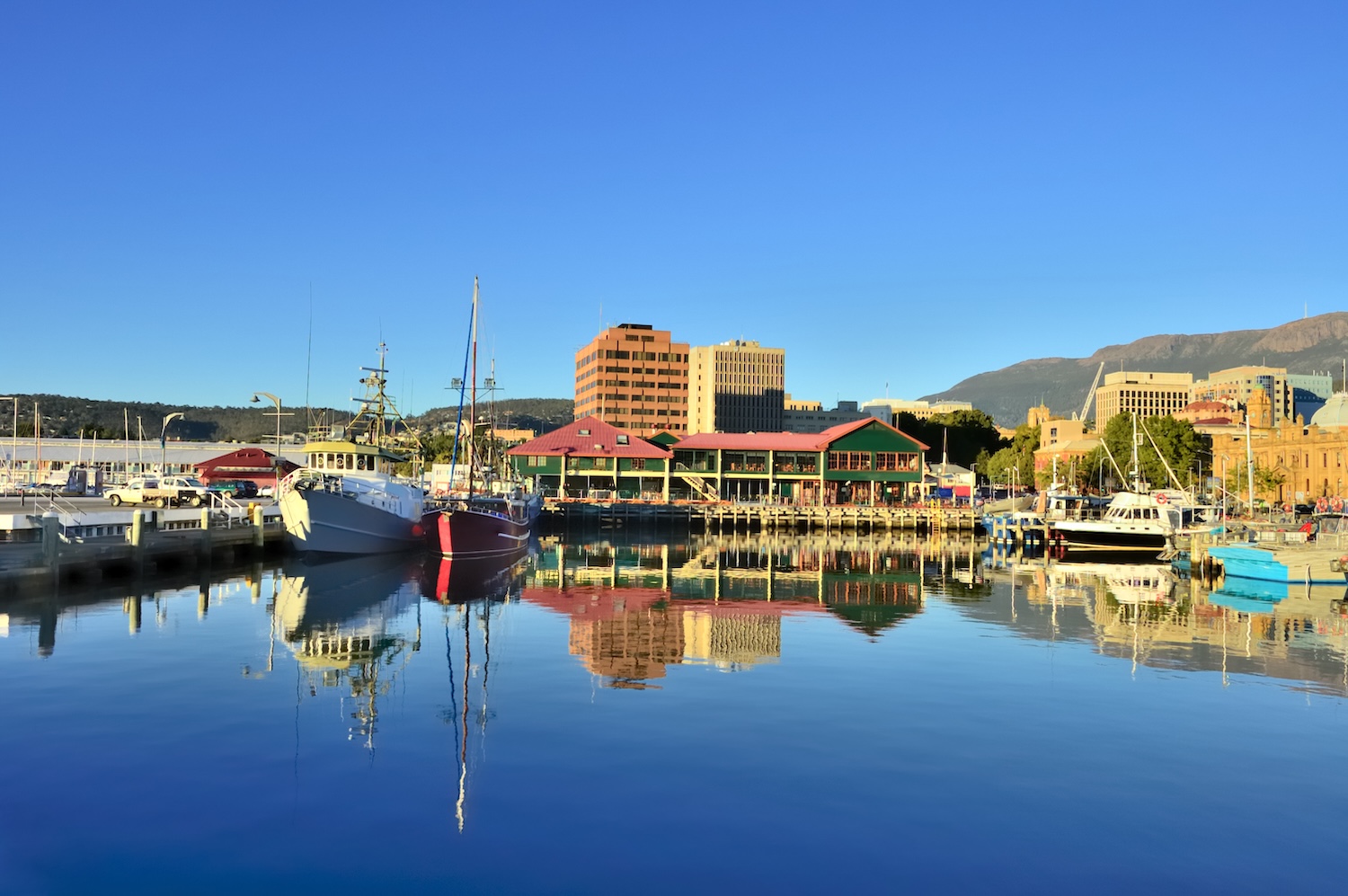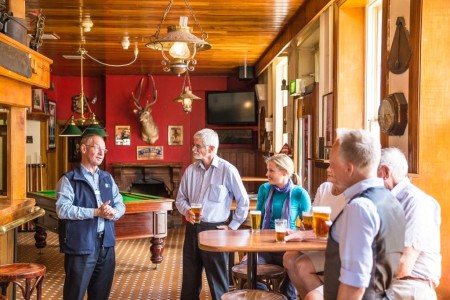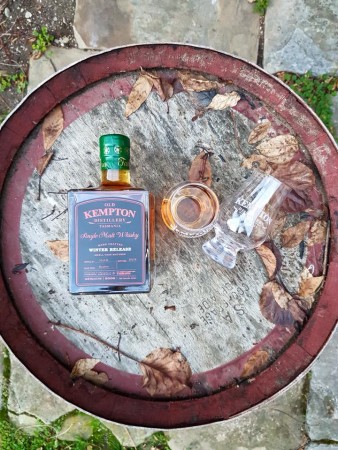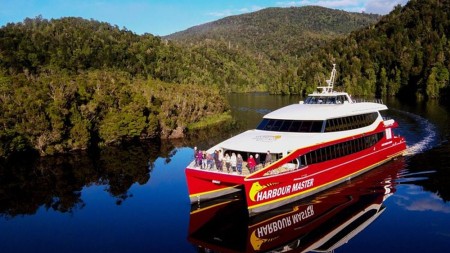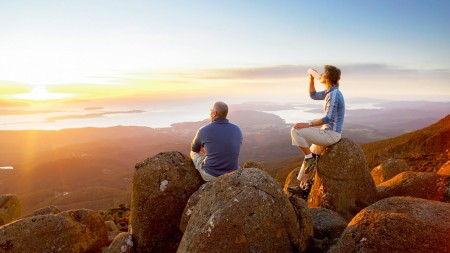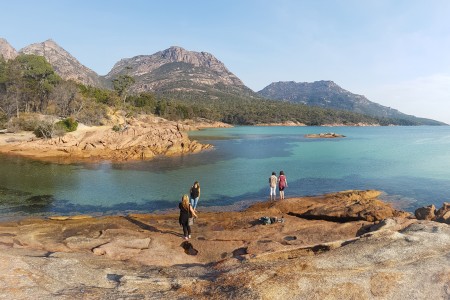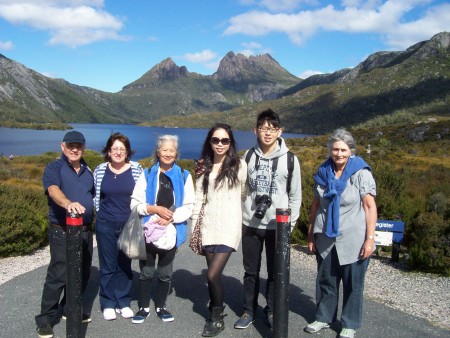Unlike any other Australian state, Tasmania goes by a few different names. Renowned for its delicious fruit crops - particularly the almost year-round production of crisp, juicy apples, it’s often referred to as The Apple Isle and sometimes Van Diemen’s Land, so named by the Dutch explorer Abel Tasman on landing here in 1642, but most Aussies simply call it Tassie.
The island is Australia’s most southern point and it’s the perfect spot for seeing the Southern Lights. Aurora Australis skies are visible year-round and best viewed from a place where you’re away from city lights. On a clear night, Mount Wellington is the closest vantage point from Tassie’s capital city of Hobart. Just head up the hill, find a good possie and take your seat for one of Mother Nature’s most heavenly treats.
Hobart has real character. Historic sandstone buildings and cute colourful houses with peaked roofs set against the hillsides give the impression of a quaint city captured by its yester-years. Not so! Hobart has a quirky flair that perhaps stems from its own sense of remoteness - a fierce pride and independence that sets it apart from other places. For instance, the city bucked the system back in the mid-20th century and built Australia’s first casino. Small by today’s standards, the circular building still stands tall on the cityscape.
Perched along the Derwent River, much of Hobart’s lifestyle revolves around the sea, sailing boats and a robust fishing industry. A tour of the pubs bears witness to the city’s rich maritime history. Nothing quite compares with the premium quality of the seafood, freshly harvested from the Tasman Sea - forever after you’ll have pangs of longing at the thought of that slice of melt-in-your-mouth salmon, delicious plump oysters or tender sweet lobster. But that can be said for Tasmania’s food industry in general. Chilly winters and temperate summers make for a gentle transition from one season to the next, marked by the fresh seasonal fruit and veg that fill the Salamanca Market stalls each Saturday. The markets are a highlight and year-round must-do experience. Visitors time their itineraries to make sure market day is duly listed.
Another must-do experience is the historical penal settlement of Port Arthur. For this tour, even the hard-hearted might be reaching for the tissues. The buildings long since abandoned by its early residents are a time capsule of cruelty and hardship, sacrifice and endurance - a testimony to the extraordinary strength of the human spirit. From here you can head to Fortescue where a kayak will take you to towering pillars of rock that stand like silent sentinels of the sea. Not far north is Waterfall Bay and beyond that Pirates Bay. Between the two are outcrops brandishing spectacular sites such as the Devil’s Kitchen, Tasman Arch and Blow Hole.
These are just a taste of what lies ahead. If you’re in holiday mode, you can pack your itinerary with a host of Tassie must-do attractions. You won’t be disappointed. If time is limited, you can comfortably circumnavigate the island in a week or two but otherwise, take your time to take it all in. The longer Tassie has you, the longer you’ll want to stay. Having extra time will allow you the luxury of spending time discovering Tassie’s islands, particularly Bruny and Maria islands off the south east coast. Bruny Island is beautiful and bountiful. Full day tours will take you the all-encompassing views of the coastline from the Long Neck, the historic Bruny Cape lighthouse and wildlife walks topped off with local gourmet food and drinks.
Maria Island is further north and the entire island is national park. A truly extraordinary destination, here wombats and kangaroos roam the hillsides undisturbed by traffic. Yes, that’s right – strictly no vehicles allowed! It’s worth noting at this point that Tassie is home to the largest exposed dolerite in the world and on Maria Island, it’s not hard to see why. The cliffs along this coastline make up a geological phenomenon, from the Darlington limestone fossil beds and glacial dropstones to the Bishop and Clark Dolerite, from the peak of which you can see almost the entire island. Another unique must-see are the brightly patterned orange and yellow swirls of the Painted Cliffs. Reminiscent of some funky retro-1970s styling, they are in stark contrast to the azure waters and white sandy beaches of Shoal and Riedle bays, which are perfectly scalloped side by side, much like a jigsaw piece, separated only by the narrowest stretch of land.
Maria Island is the starting point for the east coast road, an exceptional 220-kilometre scenic route that will thrill adventure seekers of all ages. There’s something for everyone along the way and you won’t want to miss a thing. Be prepared for a stop-start trip that’s full of surprises as you call into fishing villages where you can feast on fresh delicacies of rock lobster and abalone washed down with award-winning local wines, follow historical trails, hike through vast national parks tinged with the pink hue of granite mountains and alive with rare and unique flora and fauna, stand on shelves of stone the colour of fire and ice, or dive into aqua waters to explore sea caves and kelp forests.
Sweeping east from Swansea, you’ll come across Coles Bay Conservation Park the precursor to Freycinet National Park, one of Tassie’s top spots for unlimited natural adventure. A guided tour of the park is a must if you want to make the most of it. The spectacular scenery, walking trails and white gum forests, Freycinet’s famous Wineglass Bay and the barren Schouten Island at its southern tip make for wonder-filled days of exploring both land and sea.
Sitting north, is Launceston, Tasmania’s second largest city and the heart of the Tamar region, a prolific food producing area famous for its fine wines, fruits and vegetables. The farmers here are in no doubt it’s the crisp climate and sea air that makes their food and wine taste better. Food and drink tours are a great way to experience the diverse natural flavours and culinary creations that give Tamar its name. From Launceston you can follow the northern coastal road to Davenport and the apple growing capital of Australia, Burnie.
Tasmania’s western coast is vastly different from its eastern counterpart. Sparsely populated with only pocket-sized townships along the route the area is known as The Tasmania Wilderness World Heritage Area, which includes the Central Highlands and West Coast mountain ranges. Its crown and glory are a trio of pristine national parks from the internationally renowned Cradle Mountain at Lake St Clair, Gordon-Franklin Wild Rivers National Park and Southwest National Park.
On the coastline, Macquarie Heads and the sleepy harbourside town of Strahan hug the banks of the Macquarie Historic Harbour, while north east the vegetation suddenly disappears on reaching Queenstown, Tasmania’s once booming mining and timber town. At one time the world’s richest copper mine and a huge resource for old growth forest timber, those industries stripped bare the surrounding terrain, earning the town a reputation for being a moonscape - a tourist attraction in its own right. But, with those days long since passed, Mother Nature is getting her own back and reclaiming her land bit by bit as new green growth breaks through the rocky ridges.

